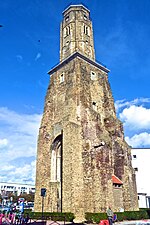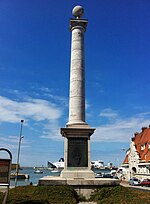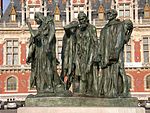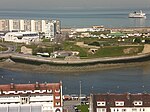Battle of Calais

The Battle of Calais took place in 1350 when an English force defeated an unsuspecting French army which was attempting to take the city. Despite a truce being in effect the French commander Geoffrey de Charny had planned to take the city by subterfuge, and bribed Amerigo of Pavia, an Italian officer of the city garrison, to open a gate for them. The English king, Edward III, became aware of the plot and personally led his household knights and the Calais garrison in a surprise counter-attack. The French were routed by this smaller force, with significant losses and all their leaders captured or killed. Later that day, Edward dined with the highest-ranking captives, treating them with royal courtesy except for Charny, whom he taunted for having abandoned his chivalric principles both by fighting during a truce and by attempting to purchase his way into Calais rather than fight. As Charny was considered a paragon of knightly behaviour, the accusations struck deep, and were frequently repeated in subsequent English propaganda, as Charny was to write several authoritative books on chivalry. Two years later, having been ransomed from English captivity, Charny was placed in charge of a French army on the Calais front. He used it to storm a small fortification commanded by Amerigo, who was taken captive to Saint-Omer and publicly tortured to death.
Excerpt from the Wikipedia article Battle of Calais (License: CC BY-SA 3.0, Authors, Images).Battle of Calais
Rue Notre-Dame, Calais
Geographical coordinates (GPS) Address Nearby Places Show on map
Geographical coordinates (GPS)
| Latitude | Longitude |
|---|---|
| N 50.958 ° | E 1.853 ° |
Address
Église Notre-Dame
Rue Notre-Dame
62100 Calais
Hauts-de-France, France
Open on Google Maps










